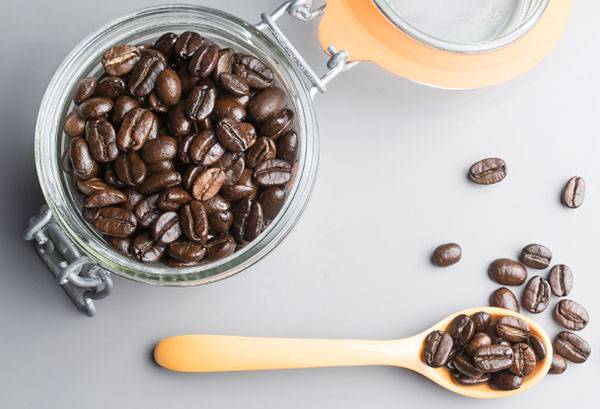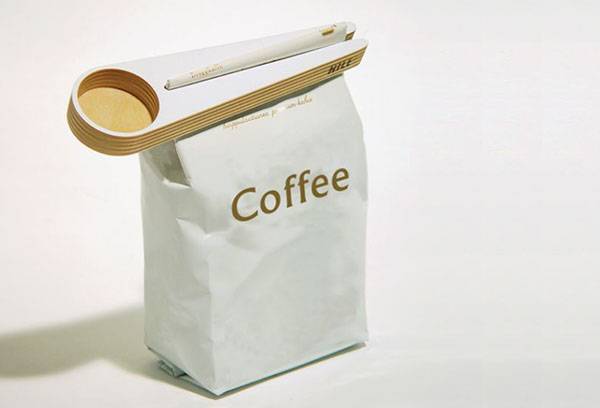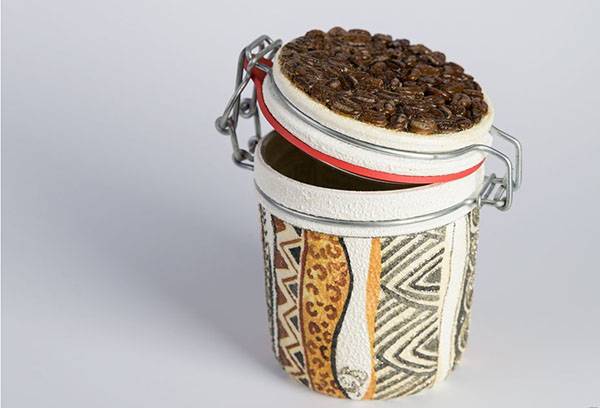How to store an open package of coffee beans?
It is important to know how to store coffee, grain and ground, because if the proper conditions are not met, the drink will lose its taste. Fans of certain varieties often buy the product for future use. Storage of grains at the right temperature and in a suitable container allows you to not lose the pleasant aroma and richness of the taste of the brewed drink.
The purchase of beans by weight in coffee shops, at first glance, guarantees the freshness and quality of the product. However, this is not entirely beneficial in terms of economy (large packaging costs many times cheaper). And how can you be sure that the store met all the necessary conditions? So that a morning cup of coffee gives you only pleasure, and the aroma of vivacity spread throughout the house, find out all about the rules of storage of the product.
In the descending order, 4 factors are named that have a detrimental effect on the bouquet of aroma and taste of fresh coffee beans:
- air;
- air humidity;
- room temperature;
- shine.
General storage rules
The greatest resistance to loss of taste is possessed by green coffee beans. Green coffee beans should only be stored in an airtight jar so that destructive air for this product does not penetrate the packaging. It is advisable to place the jar in a dark place where the sun's rays do not penetrate. Raw grains can be stored for more than 1 year if you comply with all the necessary rules.
Roasted coffee, to which everyone is accustomed, is stored far less than green. Factory packaging with a valve saves the aroma for about 2-3 months (the term is indicated on the package). After opening or mechanical damage, the shelf life is reduced to 15 days. Particularly demanding "coffee lovers" are advised to use the packaging in 10 days. This does not mean that the drink will become unsuitable for consumption, but a decrease in taste and aroma saturation is ensured.
- Packaging. When opening, cut only a small corner. After pouring the required number of grains, release the maximum amount of air, wrap the cut part of the package several times and fasten with a clothespin.
- Bank. The main condition is tightness. Storing coffee in a glass or plastic jar with a sealed lid has a longer shelf life.
Special package
Offering to store coffee beans in a bag, experts are not talking about thin plastic bags with handles. In stores specializing in the sale of tea and coffee drinks, you can purchase special bags for storing coffee beans. They are made of thick polyethylene with a layer of foil. At the top there is a ziplock (tight fastener), at the bottom there is a special valve.
The benefits of using packages are obvious.
- Extraneous odors do not penetrate the zipped bag of cereal or ground product. The grains have a porous structure, which helps to absorb extraneous odors. Ziplock protects not only from air, but also from excessive moisture.
- Fresh coffee gives off gas. For this, the package is equipped with a special valve that releases air from the package and prevents it from penetrating inside.
- The bag can be compressed, which will lead to sealing of the product and minimizes the penetration of air between the grains.
- Due to the layer of aluminum foil, the packaging prevents direct sunlight.
The coffee bag can be stored for up to 2 weeks without loss of taste and aroma.
Bank
The preferred material for the can is glass, clay, ceramics. The jar should have a tight-fitting lid (with a layer of silicone), which will prevent the penetration of moisture and air.Prefer cans with opaque walls to protect the product from light.
Storing coffee in sealed containers has a number of disadvantages compared to special bags.
- Gases are formed immediately after roasting in the grains, so it is best to wait a couple of days before placing the roasted product in a jar.
- After closing the lid, air and trapped moisture remain in the jar, which contributes to the course of oxidation processes.
- Transparent glass transmits light; it is better to wrap such a jar with dense matter.
Experts strongly advise against using plastic containers (jars or containers) for three reasons. Firstly, the material has a specific smell, which is quickly absorbed by the grains. Secondly, containers do not have sufficient tightness (air and moisture will get inside). Thirdly, they have transparent walls that do not protect the product from light rays.
Where to store?
Storage of coffee has a different shelf life, depending not only on the packaging, but also on the place. You can store the product in a cupboard, refrigerator and freezer. Each of the places has both advantages and disadvantages.
- Kitchen Cabinet.
This place is ideal for storing coffee that you grind and brew daily. Optimum temperature, lack of moisture and darkness are necessary conditions for the preservation of the product. Do not put a bag or a jar of grains in a cupboard located near the oven or stove, and also in front of a window facing the non-sunny side.
- Refrigerator.
Despite the widespread belief that coffee can and should even be stored in the refrigerator, do not conduct such an experiment at home. The temperature in the refrigerator compartment ranges from + 2 ° C to + 6 ° C. It is not low enough and will not provide freshness to the product. In addition, with repeated removal of the packaging from the refrigerator, the grains are covered with condensate, which turns into water and leads to rapid spoilage of even fresh product.
- Freezer
This is the best place for long-term preservation of fresh coffee. However, you need to immediately pour in the required number of grains, which you will use for daily grinding. If you freeze grains immediately after roasting, they will retain freshness for up to 2 months.
If a suitable container and storage location is chosen, the aroma of freshly ground coffee will fill your home even a few months after purchase.



